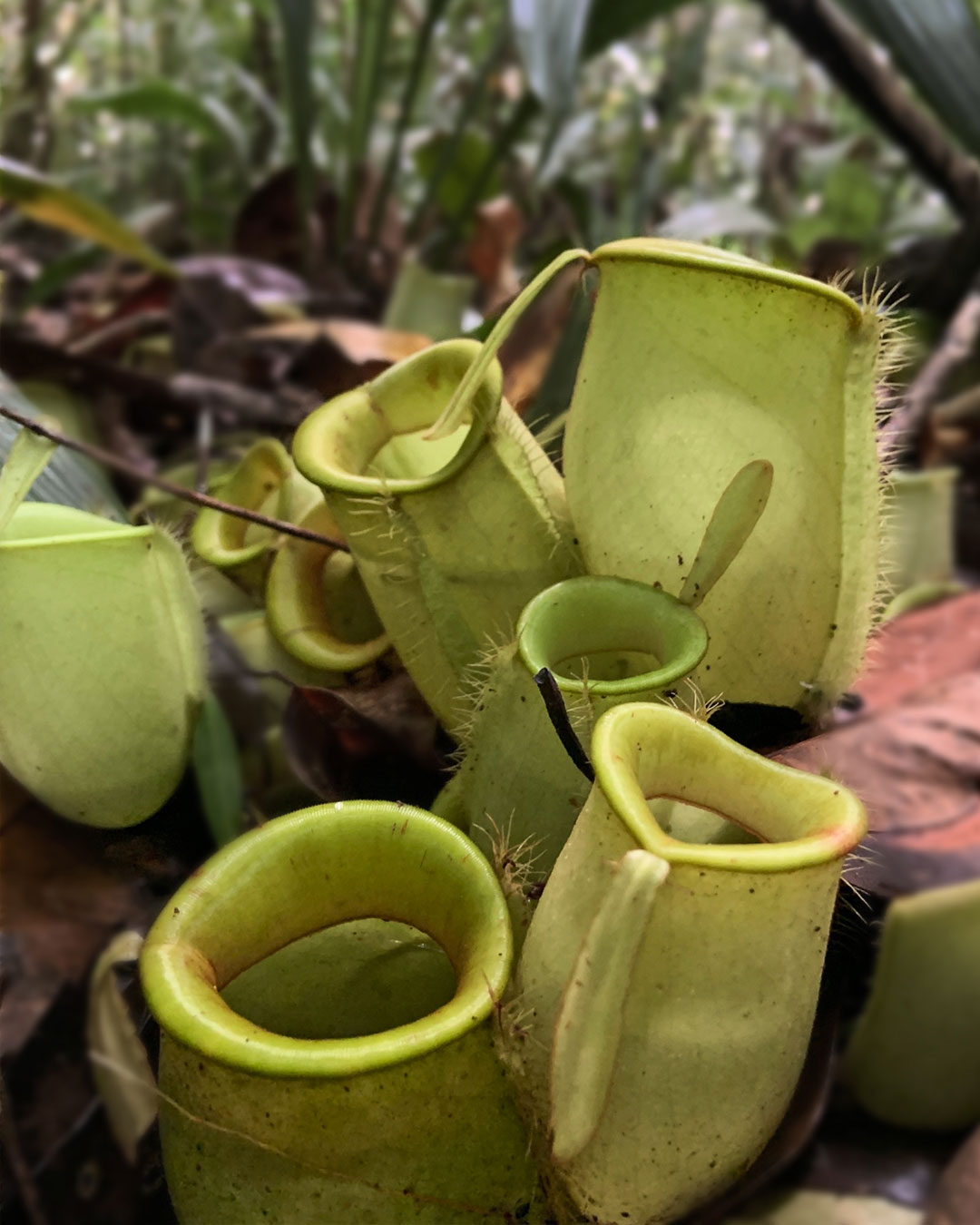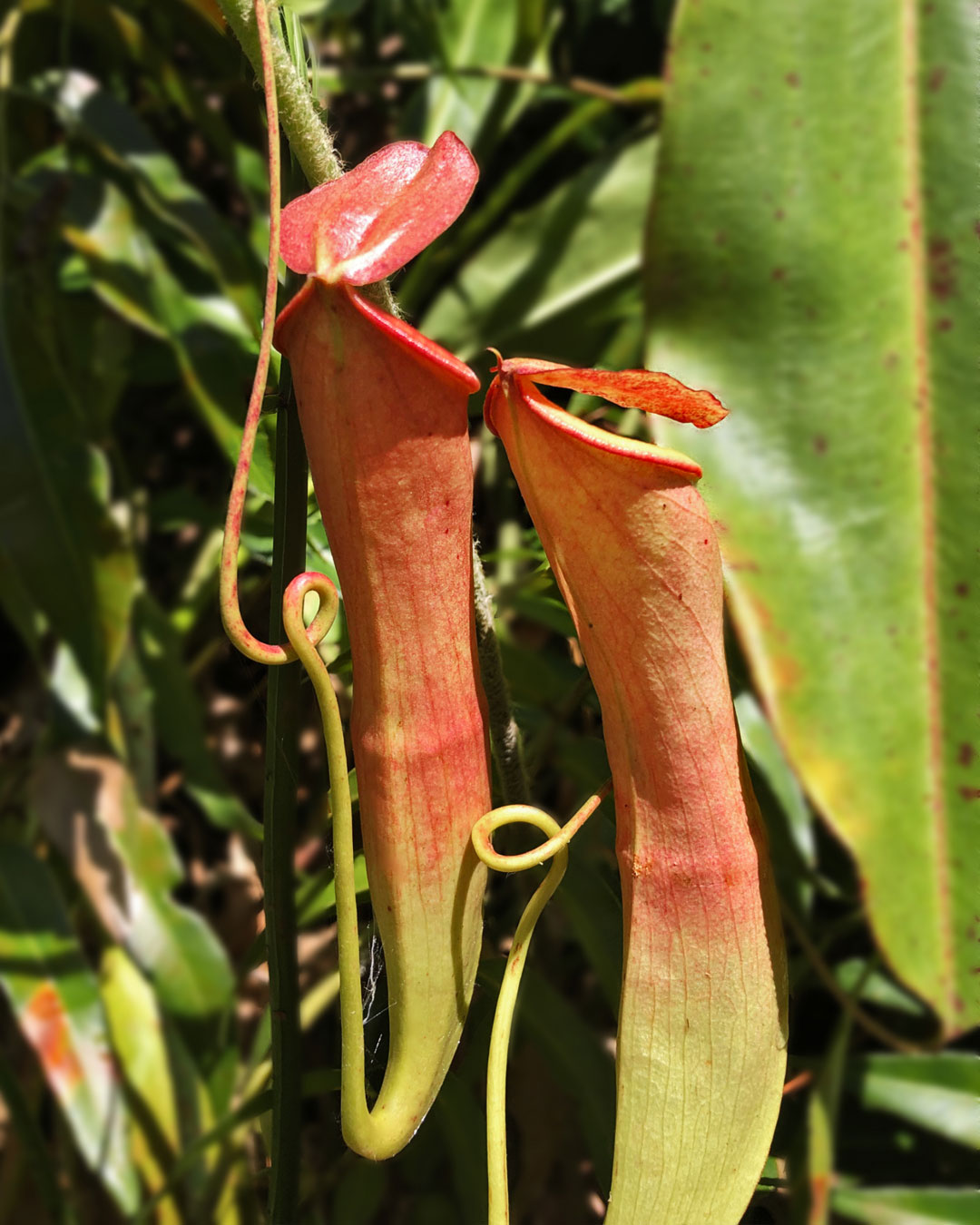November 24, 2025
Carnivorous plants are among the most extraordinary organisms in the plant kingdom. Unlike most flora species, which derive their energy from a combination of soil and sun, these unique plants supplement their diet by trapping and digesting animal prey. This amazing adaptation allows carnivorous plants to thrive in nutrient-poor habitats such as peat swamp forests, where acidic soils limit the availability of nitrogen.
On the Kampar Peninsula in Riau, Sumatra, the Restorasi Ekosistem Riau (RER) area is home to no fewer than four species of carnivorous pitcher plants (Nepenthes). Each one plays a distinct role in the forest’s ecology, contributing to the remarkable peat swamp biodiversity that RER is dedicated to protecting.
As Pak Yoan Dinata, RER’s Biodiversity Conservation Manager, explains: “Every species we protect, no matter how small or strange, has an important role in the ecosystem. By conserving them, we ensure the forest stays in balance.”
In this article, we’ll delve into the strange and fascinating world of carnivorous plants in RER, revealing their secrets and exploring how these remarkable species have evolved in harmony with their environment.
Unlike most carnivorous plants, Nepenthes ampullaria does not ‘hunt’ for insect prey. Instead, its squat, rounded pitchers act as leaf litter traps. The plant derives much of its nutrition from decomposing organic matter that falls into these containers.
This adaptation makes N. ampullaria especially well-suited to peat swamp forests, where dense canopies shed a near-constant rain of leaves. By recycling nutrients in this way, the species supports ecosystem health on the forest floor. It also contributes to the long-term regeneration of the forest itself.
N. ampullaria is still technically capable of digesting small animals if they fall in by chance. However, studies have shown that the bulk of its nutrients come from plant debris rather than insect prey. So, although N. ampullaria is the (mostly) vegetarian member of the carnivorous plant family, it hasn’t completely abandoned animal prey.
Key features of Nepenthes ampullaria:

The aptly named Nepenthes mirabilis (meaning “wonderful pitcher plant”) is the most widely distributed of all pitcher plant species. Found across Southeast Asia and into parts of northern Australia, it is a hardy plant that adapts to many conditions, including the wet, acidic soils of RER’s peatlands.
Its pitchers are slender and often reddish or green, equipped with slippery rims that cause insects to fall into digestive fluids below. This species demonstrates how carnivorous plants survive in challenging conditions, while still contributing to local biodiversity.
Fun fact: Some populations of N. mirabilis have been observed forming natural hybrids with other Nepenthes species, creating pitchers with mixed characteristics. This makes N. mirabilis a key player in the genetic diversity of carnivorous plants.

One of the most striking pitcher plants in RER is Nepenthes rafflesiana, named after Sir Stamford Raffles. Known for its large, vividly patterned pitchers, this species is a favorite among botanists and nature enthusiasts.
Rafflesiana produces two types of pitchers: Long slender, aerial ones that hang from vines; and round large, terrestrial pitchers that sit on the forest floor. These pitchers can trap not only insects but also larger prey such as frogs.
For a closer look at N. rafflesiana, check out our detailed feature on the Raffles’ pitcher plant, showcasing its beauty and ecological importance.
Why it matters:

The fourth variety of pitcher plant found in RER is Nepenthes gracilis, also known as the slender pitcher plant. True to its name, it produces narrow, upright pitchers that often appear in clusters.
This species has a fascinating adaptation: its lids can flick prey into the pitcher when struck by raindrops. Such specialized traits illustrate the evolutionary ingenuity of carnivorous plants.
Highlights of Nepenthes gracilis:

Carnivorous plants form part of the mosaic of life in RER’s 150,000-hectare restoration area. Protecting these exotic species is vital, not only for their survival, but also for the health and resilience of the wider ecosystem.
As Pak Nata emphasizes: “Our goal is to restore balance. Protecting plants like Nepenthes helps us maintain peatland ecosystems that provide clean water, regulate climate, and support local communities.”
RER’s work to document the Kampar Peninsula’s biodiversity combines scientific surveys, habitat monitoring, and community engagement to safeguard these habitats. Per June 2025, we have recorded a total of 901 distinct species, which can be categorized as follows:
RER conducts regular biodiversity surveys to track the presence and health of species, including our four species of carnivorous plants. These surveys not only confirm the richness of the forest but also guide future management strategies.
According to RER’s most recent progress report, consistent monitoring has revealed stable populations of many rare plants and animals. Such data underscores the importance of long-term conservation commitments.